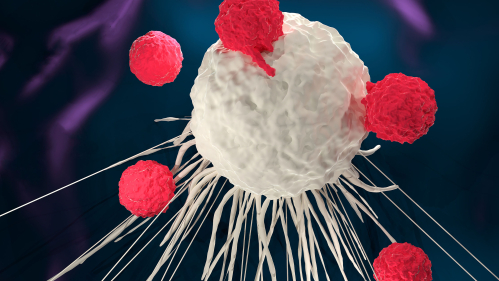Study Differentiating Function of Two Immune Cells Could Improve Vaccine Design

The immune system’s ability to remember defeated disease-causing germs and prevent subsequent infections remains incompletely understood, but a study in Science Immunology clarifies an important piece of the picture.
Rutgers researchers used specially bred mice to distinguish the functions of two types of immune cells, known as tissue-resident memory T cells (TRM cells), that protect against infection and cancer. Their work may help improve vaccine efficacy and combat a variety of autoimmune diseases.
“Understanding what each TRM cell type does allows us to formulate vaccines that generate the most effective type of TRM cell to combat a given infection, and our previous work suggests we can modify vaccines to shift the balance of these two cell types,” said Tessa Bergsbaken, an assistant professor at Rutgers New Jersey Medical School and the senior author of the study. “TRM cells are not always beneficial. Certain autoimmune disorders can be driven by TRM cells, and we think what we’ve learned will also help us discover how these cells can turn against us.”
Each new infection leads the immune system to design custom T cells — a type of white blood cell — to defend itself. After the battle is won, the immune system keeps making those same T cells (in far lesser numbers) in case a particular invader returns.
Many T cells circulate throughout the body “looking” for the antigen they’re designed to guard against, but TRM cells embed themselves in barrier tissues that separate the body from the outside world: skin, eyes, nasal passages and the entire digestive tract. Previous research has identified distinct subtypes of TRM cells and differentiated them largely by their expression of two specific proteins, CD103 and CD69. However, the functional differences of the TRM subtypes were unclear.
For the study, researchers designed mice such that they could mark CD103+ TRM cells created in response to a common bacterial infection, Yersinia pseudotuberculosis. This, in turn, allowed them to differentiate the response of the CD103+ cells to reinfection from that of CD103- TRM cells.
They found that CD103+ cells didn’t multiply after reinfection or attack the invaders directly. Instead, it was the CD103- cells that multiplied upon reinfection and attacked the bacteria.
“What we saw was essentially a division of labor between these two distinct cells, but the CD103- TRM cells played a more important role,” Bergsbaken said. “Generating a higher number of these CD103- TRM cells during the initial infection or vaccination would likely result in better protection from a subsequent infection.”

